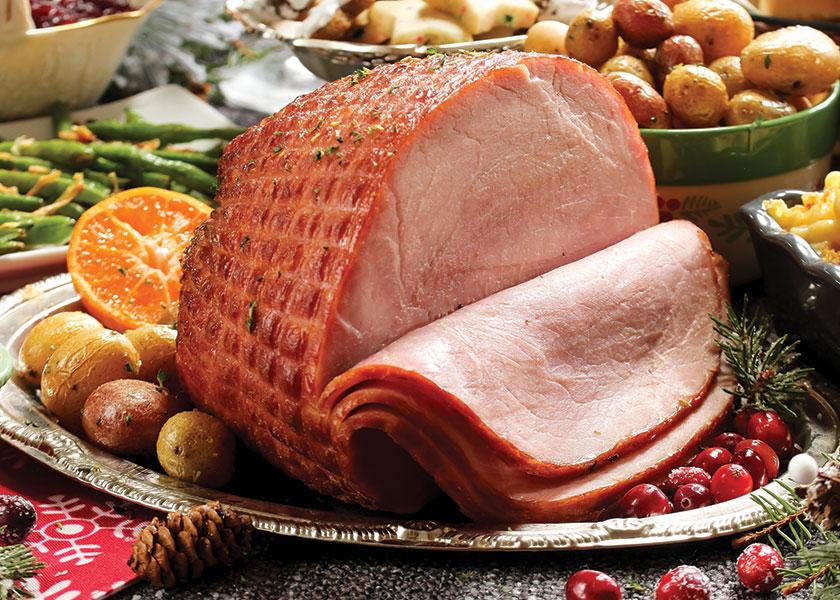The Secret to a Great Holiday Ham

For my family, holidays mean ham. My mom is a huge fan of a spiral-sliced ham. She is always delighted to find it in stock at her local store and even more so, when it is on sale. We’ve had ham for Christmas and Easter, of course, but also for Thanksgiving and even the Fourth of July. Given this family love affair with ham, I have had some time to think about “What makes a good ham?”.
To start with, what is “ham” anyway? The word ham dates from Old English ham or hom (with Germanic origins), which referred to the back of the knee. Since the 1600s, ham has been used to refer to meat from the legs of pigs, especially the upper leg or thigh. Today ham has a broad definition covering most cured and smoked meat derived from the leg of the pig whether it is bone-in, boneless, diced, restructured, whole-muscle or deli-sliced. Ham is typically cured with water and the addition of salt and nitrite-containing ingredients. This curing process is one of the reasons that ham has such a long shelf-life and can withstand being heated up again and again as leftovers.
For pork processors, what makes a good ham depends on what kind of ham product you are manufacturing. As market weights of pigs are increasing, so does the weight of the ham primal. Many families cannot hope to consume a 25-pound bone-in ham for their holiday meal so processors of whole hams like my mom’s favorite value a slightly smaller primal cut. On the other hand, to make boneless ham products, the primal cut of ham is deconstructed into its parts. Here, the weight of the overall primal is less important, and heavier ham primals are used.
Like most pork products, ham quality comes down to color, pH and water-holding capacity, which are intertwined. During processing, ingredients are mixed with water and added to hams. Hams with poor color, pH and water-holding capacity do not take up and retain this mixture well, resulting in a poor product. Even though ham quality is dependent on the same characteristics as pork loin quality, it is surprising that loin quality is not associated with ham quality (Arkfeld, et al., 2016).
What makes a good ham on your dinner table? Most hams are fully-cooked products that only need to be heated before eating, so the cooking process is really about re-heating and adding flavors if you want. Glazes containing sugary ingredients like pineapple juice, soda or brown sugar are popular and added to the outside of a ham while baking.
The ideal cooked temperature of ham is above 145°F, but take care to not overheat the ham. Overheating will dry it out. While leftover ham is also a wonderful thing, depending on the size of your holiday ham might feel like too much of a good thing. I often freeze leftover ham, already cubed, to add in soups and casseroles.
However you slice it, ham is great for the holidays and every day in between.
E. K. Arkfeld, K. B. Wilson, M. F. Overholt, B. N. Harsh, J. E. Lowell, E. K. Hogan, B. J. Klehm, B. M. Bohrer, D. A. Mohrhauser, D. A. King, T. L. Wheeler, A. C. Dilger, S. D. Shackelford, D. D. Boler. (2016) Pork loin quality is not indicative of fresh belly or fresh and cured ham quality. Journal of Animal Science 94: 5155–5167. Doi:10.2527/jas.2016-0886
More from Farm Journal's PORK:
The Importance of Waiting: 4-H Teaches That Some Things Can't Be Rushed
Meat Matters: Is Bigger Better?
PORK Q&A: Meet Dr. Anna Dilger with Meat Matters







